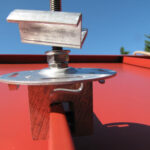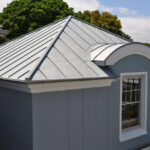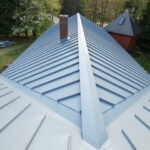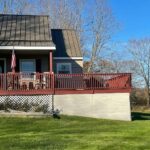Bell Shaped Roofs
ISSUE
Some roofs have “bell-shaped” curves as you progress up the rafters. This could result in a convex shape or a concave shape. Some roofs may have both shapes.
ANALYSIS
Additional labor costs are encountered on bell-shaped roofs regardless of what type of roofing is installed. Bell-shaped roofs differ from gambrel-style roofs in that the pitch change is a curved radius rather than an abrupt change.
SOLUTION
If metal roofs can be used on bell-shaped roofs, it avoids the cost of future re-roofing. Whether a particular metal profile can be used depends upon the product and also upon how “tight” the curve is. Generally, larger curves are easier to accommodate. Most vertically seamed panels are not intended for bell-shaped roofs. Some standing seam profiles, however, can be pre-curved by the manufacturer or by an outside source. In other cases, hand-forming of panels on the jobsite by a sheet metal expert can allow for curving. Many horizontally-run metal shingles can be used on curved roofs, including Classic Products’ steel and aluminum shakes. In some cases, particularly with very tight curves, it might be necessary to shorten the shingle courses so that they are not spanning over too much of the curve.
Using shingles with a great vertical exposure or with wood batten systems beneath them can reduce the visibility of the curve. Walking directly on the curved part of the roof should be avoided as there will be more airspace beneath the panels than normal. Classic Products’ Chateau Slate panels, though they have a high exposure, can be pre-curved at the factory to meet most roof curves. Whenever a manufacturer is pre-curving the panels, they should be supplied with a wood or cardboard template of the exact curve that they can follow.





 How can I help you?
How can I help you?